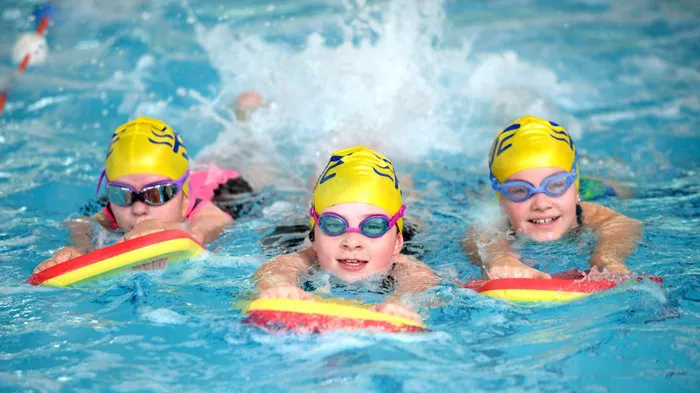Diving is an exhilarating aspect of swimming, blending technique, grace, and a sense of adventure. Whether you are a novice or looking to refine your skills, mastering the art of diving is essential for both safety and enjoyment. This guide provides a detailed overview of the fundamentals of diving, a step-by-step guide to performing a forward dive, and essential safety tips. Let’s dive in!
SEE ASLO: What Are the Benefits of Water Sports?
1. Diving Fundamentals
Safety First: The Importance of Proper Technique
When diving, safety is paramount. Proper technique not only enhances your performance but also helps prevent injuries. Diving headfirst into shallow water, for example, can lead to severe head, neck, or spinal injuries. Always ensure that the water depth is appropriate for the dive you are attempting, and never underestimate the importance of a well-executed technique.
Types of Dives
Before delving into the specifics, it’s crucial to familiarize yourself with the common types of dives. Each dive has unique characteristics, and mastering the basics will serve as a foundation for more advanced techniques. Here are some common diving styles:
Forward Dive: The most basic and commonly practiced dive, where the diver jumps forward off the diving board or pool edge.
Back Dive: A more advanced dive where the diver faces the pool, jumps backward, and rotates to enter the water headfirst.
Pike Dive: A dive that involves bending at the hips while keeping the legs straight, often performed with a forward or backward rotation.
Diving Terminology
Understanding diving terminology is essential for grasping the finer points of technique. Here are a few key terms:
Entry: The moment the diver makes contact with the water.
Takeoff: The action of pushing off the diving board or pool edge to initiate the dive.
Rotation: The body’s movement through the air as it transitions from takeoff to entry.
Exit: The diver’s completion of the dive, including how they continue swimming after the entry.
Step-by-Step Guide to a Forward Dive
Preparation: Approach and Body Position
To begin a forward dive, approach the edge of the pool with confidence. Stand with your feet together, toes curled slightly over the edge, and maintain a neutral body position. Your arms should be relaxed at your sides, and your eyes should focus on the point where you intend to enter the water.
Takeoff: Hand Placement, Arm Swing, and Leg Extension
For a powerful takeoff, start by placing your hands together above your head in a streamlined position. The arm swing is crucial—bring your arms back to generate momentum, then swing them forward as you push off with your legs. Extend your legs fully to launch yourself upward and outward into the dive.
Entry: Streamlined Body and Smooth Entry
As you descend towards the water, maintain a streamlined body position. Keep your arms extended and close to your ears, and your body should remain straight. Aim for a smooth, angled entry, with your fingertips breaking the water’s surface first, followed by your head and body in one fluid motion.
Exit: Maintaining Momentum and Control
Upon entering the water, continue to glide forward, using the momentum from the dive. Once you have slowed down, bring your arms to your sides and start swimming. A controlled and graceful exit from the dive will help you maintain form and safety.
Additional Diving Techniques
Back Dive: Execution and Safety
The back dive is a more advanced technique, requiring greater control and awareness. Begin by standing with your back to the water. Extend your arms above your head, and as you push off the edge, arch your back to rotate into the dive. Ensure that your head and arms lead the entry, and keep your body straight to avoid over-rotation.
Pike Dive: Mastering Body Positioning and Entry
To perform a pike dive, start in a similar position as the forward dive. As you take off, bend at the hips to form a “pike” position with your legs straight and together. The key to a successful pike dive is timing the rotation and entry to achieve a clean and smooth entry into the water.
Other Diving Styles
While the forward, back, and pike dives are fundamental, other styles like the reverse dive or somersault dive offer additional challenges. These dives involve more complex rotations and require advanced skill levels, making them ideal for experienced divers looking to expand their repertoire.
Essential Tips for Safe Diving
Check Depth: Ensuring Safe Water Conditions
Always check the water depth before diving. The depth should be sufficient to prevent injury upon entry. As a general rule, the water should be at least 9 feet deep for most types of dives. Shallow water can result in dangerous accidents, so take this precaution seriously.
Dive Area: Choosing a Safe Environment
Select a diving area that is free from obstacles and has clear, clean water. Avoid diving in areas with underwater hazards, such as rocks ordebris. If you are unfamiliar with the diving area, take the time to inspect it thoroughly before attempting any dives.
Proper Technique: Reducing Injury Risk
Practicing proper technique is essential for reducing the risk of injury. Ensure that you are comfortable with each step of the dive before progressing to more advanced techniques. Regular practice under the supervision of a qualified instructor can help you refine your skills and build confidence.
Listen to Your Body: Know Your Limits
Diving requires physical strength and mental focus. Always listen to your body and avoid attempting dives if you feel fatigued, unwell, or uncomfortable. Pushing yourself beyond your limits can lead to mistakes and potential injuries.
Conclusion
Diving is an integral part of swimming that requires practice, focus, and attention to detail. By following this guide, you can develop a strong foundation in diving, ensuring that you perform each dive with confidence and safety. Whether you’re just starting or looking to refine your technique, remember that mastering the basics is the key to enjoying the art of diving. Dive safely and enjoy the journey!

